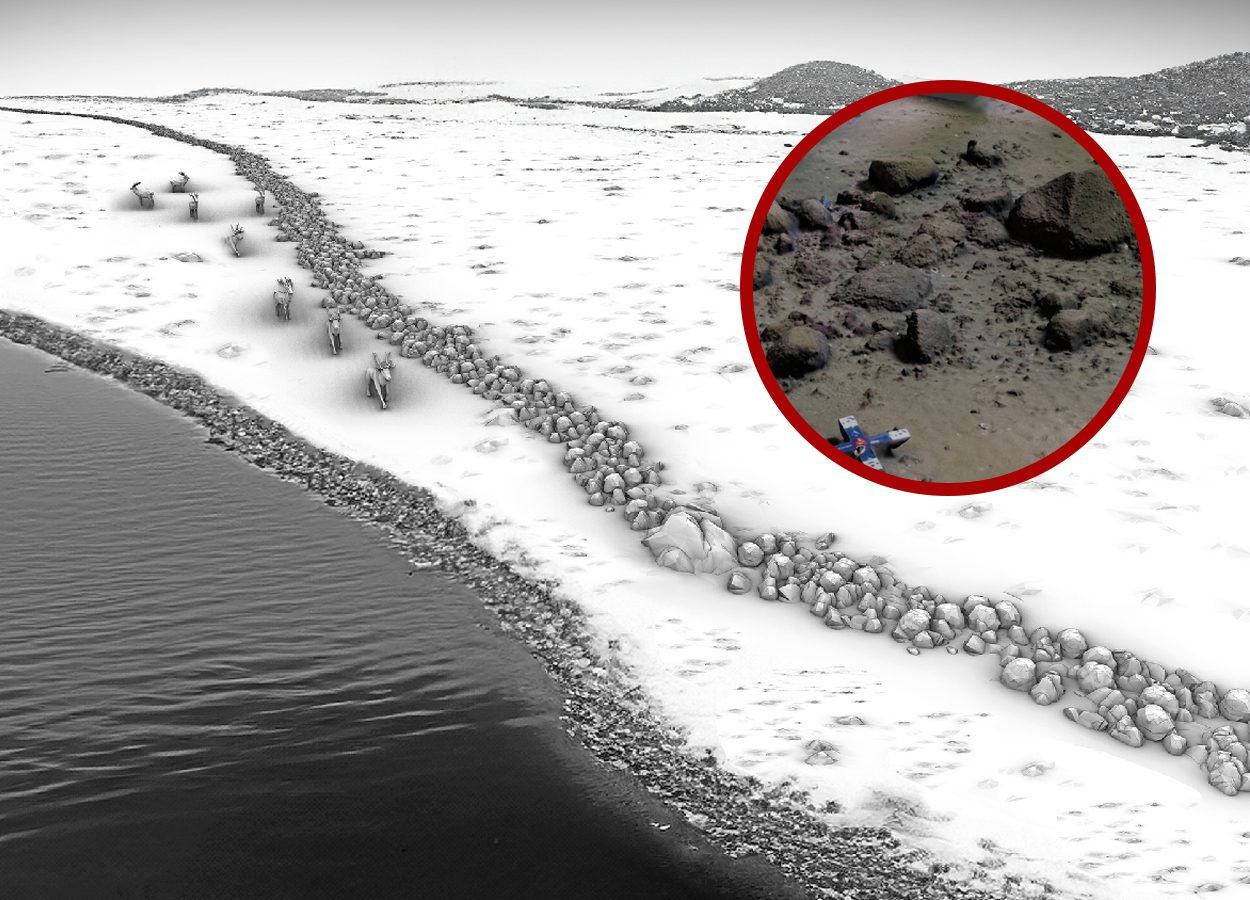Geologists have discovered a 970-metre-long megastructure of linear arranged stones, located at a depth of 21 metres on the seabed of Mecklenburg Bight in the Baltic Sea.
The megastructure consists of approximately 1,500 stones and large boulders, which was constructed around 11,000-years-ago during the early Mesolithic period.
According to a study published in the Proceedings of the National Academy of Sciences (PNAS), the megastructure was built by Stone Age hunter-gatherers for hunting herds of the Eurasian reindeer (Rangifer tarandus), which migrated seasonally through the sparsely vegetated post-glacial landscape.
Similar constructions, which are known as drive lanes, are used for manipulating the movement direction of the animals so that they can be easily trapped in a bottleneck and killed. In the example at Mecklenburg Bight, this bottleneck would be between the adjacent lakeshore and the wall, or even into the lake.
Marcel Bradtmöller from the University of Rostock, said: Excluding natural processes and a modern origin, the stonewall could only have been formed after the end of the last ice age, when the landscape was not yet flooded by the Baltic Sea.”
“At this time, the entire population across northern Europe was likely below 5,000 people. One of their main food sources were herds of reindeer, which migrated seasonally through the sparsely vegetated post-glacial landscape,” added Bradtmöller.
According to the researchers, the discovery holds immense scientific significance, being not only the oldest known human structure found in the Baltic Sea, but also for providing new insights into the subsistence patterns of early hunter-gatherer communities.
A further study of the stonewall and the seabed will involve using side-scan sonar, sediment echo sounder, and multibeam echo sounder devices. In addition, underwater archaeologists from the University of Rostock and archaeologists from the LAKD M-V, are scheduled to explore the stonewall and its environs in search of archaeological artefacts that could aid in further understanding the structure’s significance.
Header Image Credit : P. Hoy, 3D Model : J. Auer





